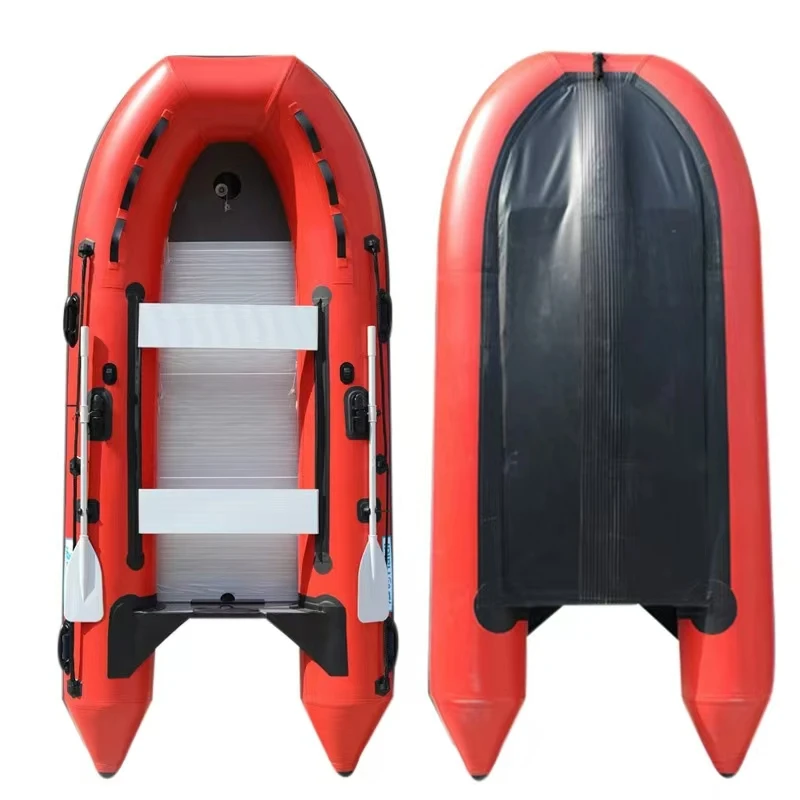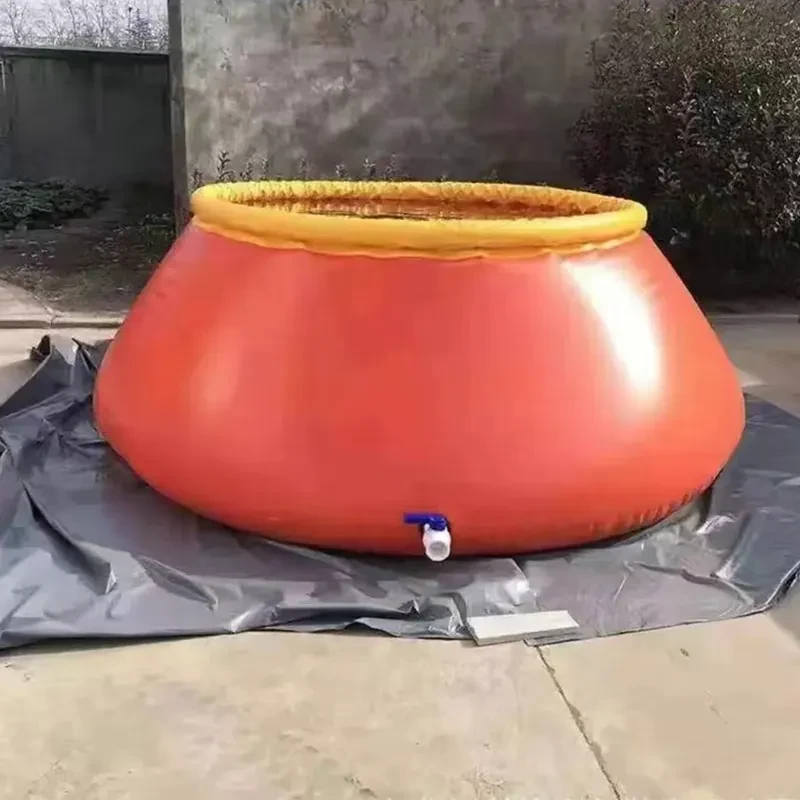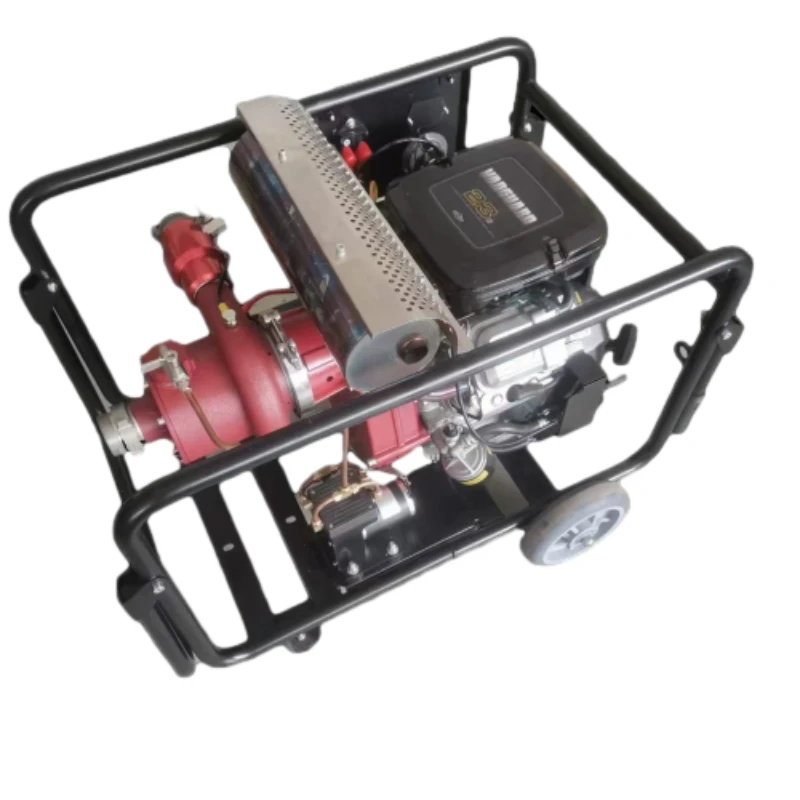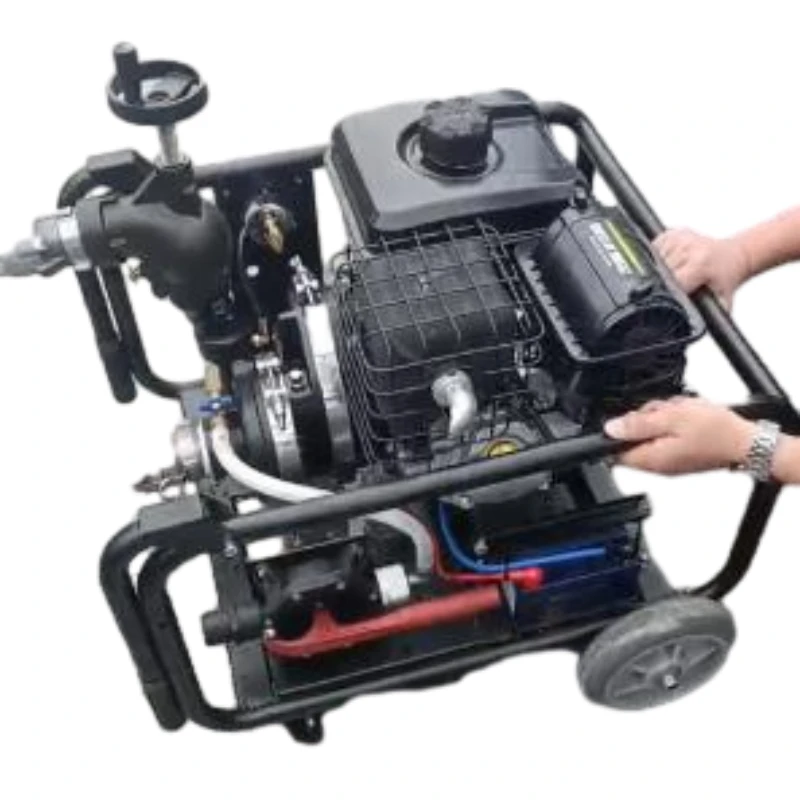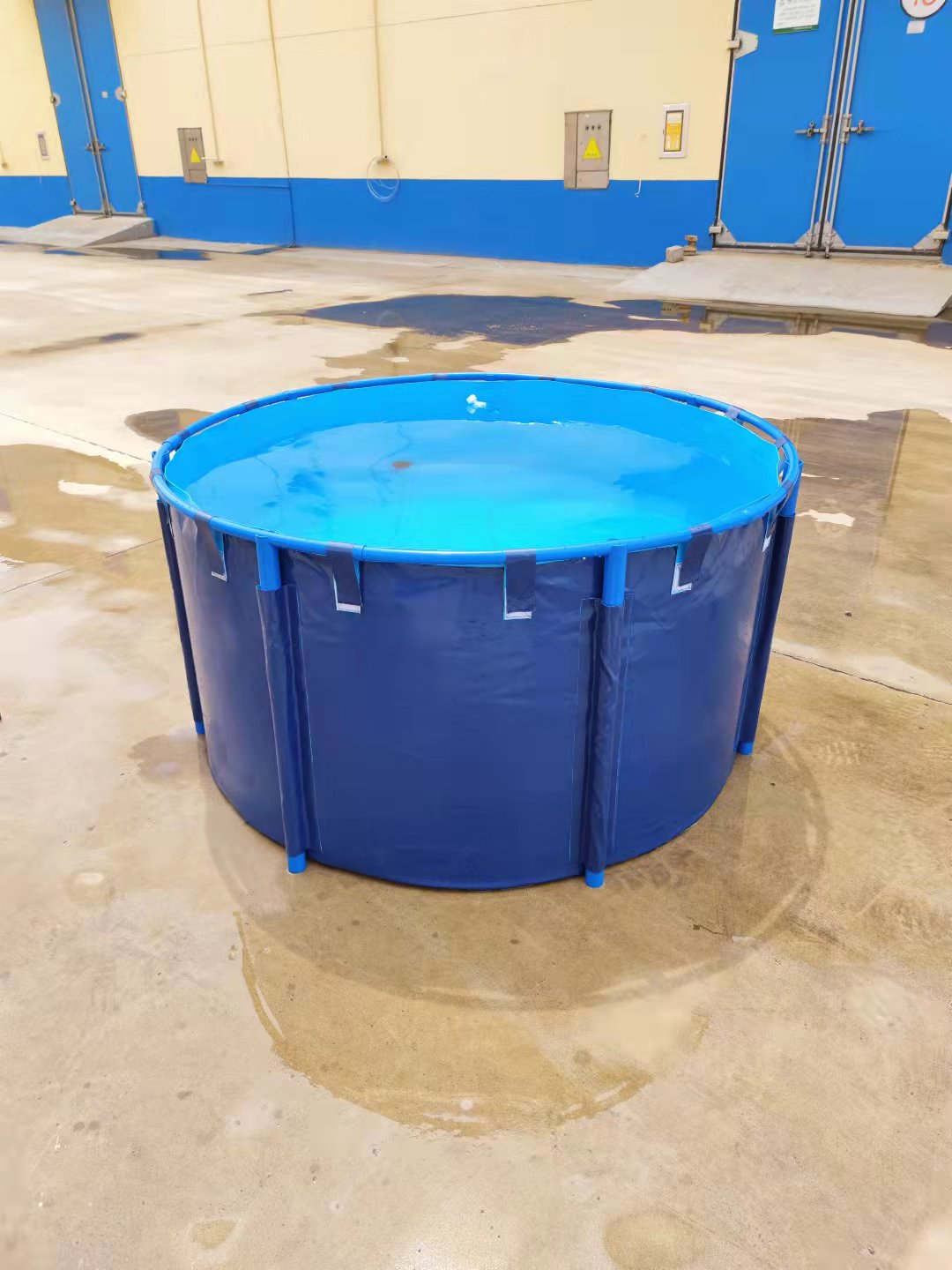In the vast and complex ecosystem of industrial infrastructure, the integrity and efficiency of fluid storage solutions are paramount. From ensuring uninterrupted power supply in critical facilities to facilitating the smooth operation of extensive petrochemical complexes, the humble yet indispensable Fuel Tank stands as a cornerstone. These robust container111s are engineered to safely and reliably store a diverse array of combustible liquids, including petroleum products, diesel, gasoline, and various chemicals, making them vital assets across nearly every sector of the global economy. Their design, construction, and operational integrity directly impact environmental safety, operational continuity, and economic efficiency. The evolving demands of industry, coupled with increasingly stringent environmental regulations and safety standards, necessitate a sophisticated approach to fuel storage, pushing manufacturers to innovate constantly in material science, fabrication techniques, and integrated monitoring systems. The selection of an appropriate fuel storage solution transcends mere capacity considerations, delving deep into material compatibility, structural resilience, corrosion resistance, and the ability to withstand extreme environmental conditions, all while adhering to a rigorous framework of international and local compliance standards. This comprehensive overview aims to provide B2B decision-makers and technical personnel with an exhaustive understanding of modern fuel storage solutions, focusing on the critical aspects that drive performance, safety, and longevity in diverse industrial applications.
Industry Trends and Technological Advancements in Fuel Tank Design
The landscape of fuel storage is undergoing a significant transformation, driven by a confluence of factors including global sustainability initiatives, the imperative for enhanced safety protocols, and the pervasive integration of digital technologies. One of the foremost trends is the heightened emphasis on environmental protection, leading to the widespread adoption of double-walled or secondary containment solutions for Fuel Tank systems. This design mitigates the risk of leakage and environmental contamination, offering an additional layer of security beyond traditional single-wall designs. Furthermore, advancements in material science are continuously yielding more durable, corrosion-resistant, and lightweight materials, such as fiberglass reinforced plastic (FRP) alongside traditional carbon and stainless steels, which offer tailored benefits for specific chemical compatibilities and installation environments. The drive towards extended service life and reduced maintenance cycles is also pushing manufacturers to develop superior internal linings and external coatings, often involving advanced polymer composites or epoxy-based systems, designed to withstand aggressive chemicals and harsh atmospheric conditions for decades without degradation.
Digitalization is arguably the most disruptive trend influencing Fuel Tank management. The integration of Internet of Things (IoT) sensors, real-time monitoring systems, and predictive analytics has revolutionized the way fuel inventory is managed, leaks are detected, and maintenance schedules are optimized. Smart Fuel Tanks can now provide continuous data on fuel levels, temperature, pressure, and even the integrity of the tank walls, transmitting this information to centralized control systems or cloud platforms. This allows for proactive maintenance, prevents costly downtime, and ensures regulatory compliance by providing an auditable trail of operational data. Predictive maintenance, powered by AI and machine learning algorithms analyzing historical and real-time data, can forecast potential equipment failures before they occur, enabling timely interventions and significantly extending the operational lifespan of the assets. Furthermore, remote monitoring capabilities allow for efficient management of distributed fuel storage networks, reducing the need for manual inspections and enhancing operational safety by minimizing human exposure to hazardous environments. This holistic approach to fuel storage management not only enhances operational efficiency but also significantly contributes to a company's environmental stewardship goals by minimizing the risk of spills and ensuring optimal resource utilization.
Dissecting the Fuel Tank: Technical Parameters and Performance Metrics
The efficacy and safety of a Fuel Tank are fundamentally defined by a comprehensive suite of technical parameters and performance metrics. Understanding these specifications is critical for proper selection and deployment in any industrial context. Key among these is the material of construction, typically high-grade carbon steel (e.g., SA-516 Grade 70 for pressure vessels, ASTM A36 for atmospheric tanks), stainless steel (e.g., 304, 316 for corrosive fluids), or specialized fiberglass composites (FRP). Each material offers distinct advantages in terms of corrosion resistance, strength-to-weight ratio, and cost. Carbon steel tanks are robust and economical for petroleum products, while stainless steel is preferred for aggressive chemicals or environments requiring exceptional cleanliness. FRP tanks offer excellent corrosion resistance and are often favored for underground installations due to their non-corrosive nature in moist soil. Capacity, ranging from a few hundred to several million gallons (or liters), dictates the volume of fuel that can be stored, directly influencing logistics and operational independence. Pressure ratings are crucial for pressurized storage systems, adhering to standards like ASME Boiler and Pressure Vessel Code (BPVC), while atmospheric tanks comply with API 650 for welded tanks for oil storage. The design pressure and temperature range must align with the stored product's characteristics and the operating environment, ensuring structural integrity under various thermal and static loads.
Beyond core structural aspects, a Fuel Tank’s performance is also gauged by its internal and external protective systems. Internal linings, such as epoxy, polyurethane, or polyurea coatings, prevent direct contact between the stored fuel and the tank's metallic interior, crucial for preventing corrosion, especially with fuels containing biofuels or water. External coatings, often multi-layer epoxy or polyurethane systems, provide robust defense against environmental corrosion, UV radiation, and abrasive elements. Ancillary features, though often overlooked, contribute significantly to operational safety and efficiency. These include overfill prevention devices, vent lines with flame arrestors, high-level alarms, emergency vents, manways for inspection and maintenance, and various instrumentation ports for level gauges, temperature probes, and pressure transmitters. Compliance with rigorous industry standards, such as API (American Petroleum Institute) for large atmospheric storage tanks, UL (Underwriters Laboratories) for smaller shop-fabricated tanks, NFPA (National Fire Protection Association) codes for fire safety, and environmental regulations like EPA (Environmental Protection Agency) guidelines, is non-negotiable. These standards dictate everything from material specifications and welding procedures to secondary containment requirements and seismic design considerations, ensuring that every Fuel Tank meets global benchmarks for safety, durability, and environmental responsibility. Regular non-destructive testing (NDT) methods like ultrasonic testing (UT), magnetic particle inspection (MPI), and visual inspection (VT) during and after fabrication further validate the structural integrity and weld quality.
Fuel Tank Key Specifications Table
| Parameter | Description | Typical Range/Value | Applicable Standards |
|---|---|---|---|
| Material of Construction | Primary material used for tank shell and heads. | Carbon Steel (A36, SA-516 Gr. 70), Stainless Steel (304, 316), Fiberglass Reinforced Plastic (FRP) | ASTM, ASME, UL 142 |
| Capacity | Volume of fluid the tank can safely hold. | 500 gallons - 5,000,000+ gallons (approx. 2,000 L - 19,000,000+ L) | API 650, UL 142, NFPA 30 |
| Design Pressure | Maximum pressure the tank is designed to withstand. | Atmospheric to 300+ psi (20+ bar) for pressure vessels | ASME BPVC Section VIII, API 620 |
| Operating Temperature Range | Temperature range for safe operation. | -40°F to 250°F (-40°C to 120°C) | ASME, API, client specifications |
| Corrosion Protection | Methods to prevent degradation from corrosion. | Internal linings (epoxy, polyurethane), External coatings (epoxy, urethane), Cathodic protection | NACE, SSPC |
| Service Life Expectancy | Anticipated operational lifespan of the tank. | 20-50+ years (with proper maintenance) | Industry best practices, design codes |
| Seismic Design Category | Classification based on earthquake resistance. | Categories A to F (based on ASCE 7) | ASCE 7, local building codes |
| Certifications | Industry-recognized quality and safety approvals. | ISO 9001, ASME U/R/S Stamps, API Monogram, UL Listing, CE Marking | International/National regulatory bodies |
The Art of Fabrication: Unveiling the Fuel Tank Manufacturing Process
The manufacturing of a high-quality Fuel Tank is an intricate process demanding precision, adherence to stringent engineering standards, and an unwavering commitment to quality control at every stage. It begins with meticulous design, often utilizing advanced CAD/CAM software to simulate structural integrity, fluid dynamics, and stress points under various load conditions. Engineers consider factors such as the type of fuel, storage temperature, pressure requirements, seismic activity, and local environmental regulations. Material selection follows, where engineers carefully choose the appropriate grade of steel (e.g., SA-516 Grade 70 for pressure vessels, ASTM A36 for atmospheric tanks, or various grades of stainless steel for corrosive media) or composite materials, ensuring compatibility with the stored product and longevity in the intended operating environment. Once approved, the raw materials, typically steel plates, are procured from certified suppliers, complete with mill test certificates to verify chemical composition and mechanical properties. The plates then undergo precise cutting, often using CNC plasma or laser cutting machines, to form the tank shell sections, heads, and ancillary components such as nozzles and manways. This phase ensures minimal material waste and highly accurate dimensions, crucial for subsequent assembly steps.
Forming is the next critical step, where the cut plates are bent, rolled, or pressed into the desired cylindrical or spherical shapes, depending on the tank design. This process requires specialized machinery like plate rolling machines to achieve the precise curvature for tank shells and hydraulic presses for forming dished or ellipsoidal heads. Following forming, the individual sections are meticulously fit-up and then welded together by highly skilled and certified welders. Welding is a cornerstone of Fuel Tank fabrication, employing advanced techniques such as Submerged Arc Welding (SAW), Gas Metal Arc Welding (GMAW/MIG), or Shielded Metal Arc Welding (SMAW/Stick) to create strong, leak-proof seams. Every weld is subjected to rigorous Non-Destructive Testing (NDT) to detect any internal flaws or surface discontinuities. Common NDT methods include radiographic testing (RT) for volumetric defects, ultrasonic testing (UT) for wall thickness and internal flaws, magnetic particle inspection (MPI) or liquid penetrant testing (LPT) for surface cracks, and visual inspection (VT) throughout the process. These tests ensure that welds meet the stringent requirements of ASME, API, or other applicable codes. After welding and NDT, the tank undergoes internal and external surface preparation, including abrasive blasting to create a clean profile for coating adhesion. High-performance internal linings (e.g., epoxy, polyurethane) are applied to protect against internal corrosion, while external coatings provide defense against environmental elements. Finally, the tank undergoes hydrostatic testing, where it is filled with water and pressurized to a specified level, to verify its structural integrity and leak-tightness before final inspection and dispatch. This comprehensive process, emphasizing material quality, precision engineering, and rigorous testing, ensures that each Fuel Tank delivered meets the highest standards of safety, durability, and performance.
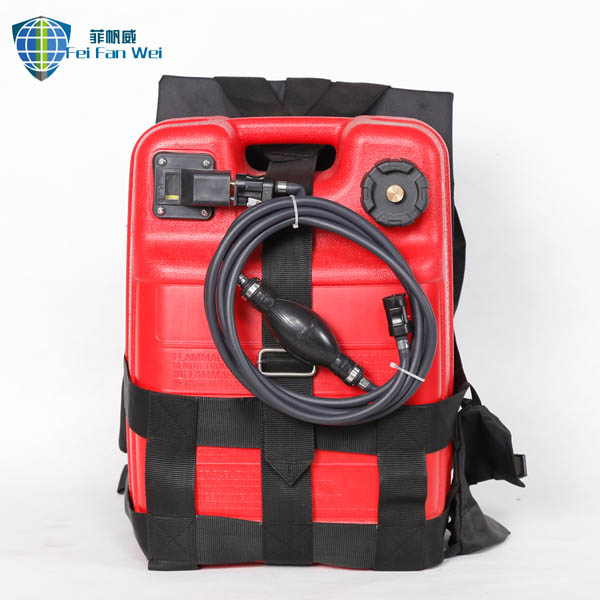
Diverse Applications: Where Fuel Tanks Power Industries
The versatility and critical importance of Fuel Tank systems are evident across an extensive spectrum of industrial sectors, underpinning operations from heavy manufacturing to vital public services. In the petrochemical industry, large-scale Fuel Tank farms are indispensable for storing crude oil, refined fuels like gasoline and diesel, and various intermediate chemical products. These tanks are often designed to API 650 or API 620 standards, ensuring structural integrity for massive volumes and often incorporating features for product heating or cooling. In the power generation sector, Fuel Tanks provide essential storage for diesel fuel used in backup generators at power plants, data centers, hospitals, and telecommunications facilities, ensuring continuous power supply during grid outages. For such critical applications, redundancy and rapid deployment capabilities are often key design considerations, necessitating robust, frequently double-walled tanks with advanced monitoring systems. The maritime industry relies heavily on marine-grade Fuel Tanks for ships, offshore platforms, and port facilities, demanding designs resistant to saltwater corrosion and extreme weather conditions. Similarly, the automotive and transportation sectors utilize specialized Fuel Tanks for bulk fuel stations, fleet depots, and vehicle manufacturing plants, often requiring underground or compact above-ground designs that integrate seamlessly with dispensing systems.
Beyond these primary applications, Fuel Tanks play a crucial role in the mining industry, providing on-site fuel storage for heavy machinery in remote locations, where robust construction and easy transportability are vital. In agriculture, they support irrigation systems, farm machinery, and grain drying operations, with designs often tailored for outdoor exposure and ease of access. Furthermore, municipal services, including water treatment plants, wastewater facilities, and emergency services (fire departments, police, EMS), depend on reliable fuel storage for their vehicle fleets and standby power systems. In these scenarios, the emphasis is often on immediate accessibility, long-term reliability with minimal maintenance, and adherence to public safety codes. The advantages of modern Fuel Tanks in these diverse settings are manifold: their advanced corrosion protection mechanisms, such as internal linings and cathodic protection, ensure longevity and prevent costly leaks, significantly reducing environmental impact and maintenance overheads. For industries dealing with volatile or sensitive liquids, features like advanced venting systems and precise temperature control mechanisms contribute to enhanced operational safety and product integrity. Moreover, the modularity and customizability of contemporary fuel storage solutions mean that tanks can be designed to fit specific spatial constraints, integrate with existing infrastructure, and meet unique operational demands, such as rapid dispensing rates or specialized blending capabilities, ultimately contributing to significant energy efficiency by minimizing fuel loss and optimizing distribution logistics within complex industrial environments.
Unparalleled Performance: Technical Advantages of Advanced Fuel Tanks
Modern Fuel Tanks embody a fusion of cutting-edge engineering and material science, delivering a suite of technical advantages that translate directly into enhanced safety, extended operational lifespan, and significant environmental and economic benefits. A paramount advantage is their superior safety profile. Contemporary designs often incorporate double-wall construction, creating an interstitial space that can be continuously monitored for leaks. This secondary containment effectively prevents spills and releases into the environment, safeguarding groundwater and soil, a critical factor for compliance with environmental regulations such as EPA's SPCC (Spill Prevention, Control, and Countermeasure) rule. Integrated leak detection systems, utilizing technologies like hydrostatic sensors, vacuum monitoring, or electronic probes, provide real-time alerts, enabling immediate intervention before a minor issue escalates into a major incident. Furthermore, advanced Fuel Tanks are equipped with sophisticated overfill prevention devices, high-level alarms, and emergency vents that automatically activate under excessive pressure, mitigating the risk of tank rupture or overflow during filling operations. Fire suppression capabilities, including specialized coatings and foam systems, are often integrated, particularly in high-risk environments, to enhance protection against ignition and rapid fire spread.
Another significant technical advantage lies in the extended service life and reduced maintenance requirements. This is largely attributable to the application of advanced corrosion protection strategies. Internally, multi-layer epoxy or polyurethane linings provide an impermeable barrier between the stored fuel (which may contain corrosive elements like water or sulfur) and the steel tank wall. Externally, industrial-grade multi-coat paint systems, often zinc-rich primers followed by epoxy and polyurethane topcoats, offer robust defense against atmospheric corrosion, UV degradation, and chemical exposure. For underground tanks, robust cathodic protection systems (either sacrificial anode or impressed current systems) are often employed to prevent external corrosion by redirecting corrosive electrical currents away from the tank's surface, a critical factor given the corrosive nature of underground environments. These measures significantly extend the operational life of the Fuel Tank well beyond 20-30 years, reducing the frequency and cost of major repairs or replacements. The precise fabrication processes, including automated welding and rigorous Non-Destructive Testing (NDT) such as ultrasonic and radiographic inspections, minimize structural weaknesses and ensure the integrity of weld seams, a common point of failure in less meticulously manufactured tanks. This attention to detail in design and construction leads to a lower total cost of ownership (TCO) over the tank's lifecycle, attributed to minimized downtime, reduced maintenance expenses, and avoidance of costly environmental remediation efforts associated with leaks or failures, making advanced Fuel Tanks a wise long-term investment for B2B operations focused on reliability and sustainability.
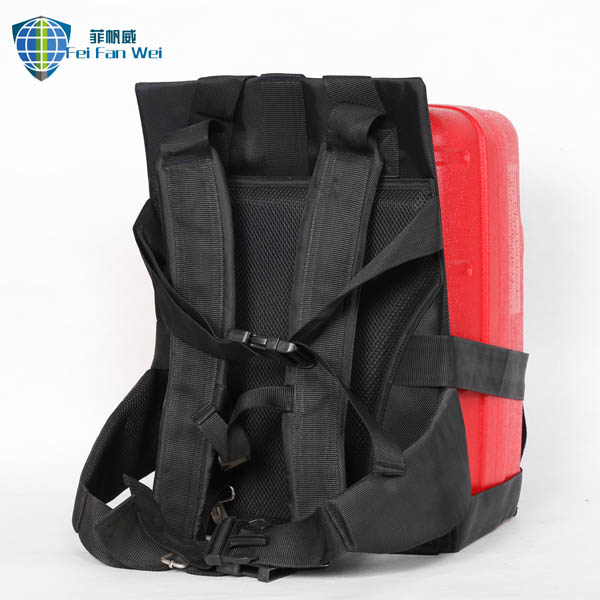
Supplier Landscape: Evaluating Fuel Tank Manufacturers
Selecting the right Fuel Tank manufacturer is a strategic decision that directly impacts the long-term reliability, safety, and cost-effectiveness of fuel storage infrastructure. A critical evaluation process should go beyond initial price quotes and delve into several key areas that define a manufacturer's capability and commitment to quality. Firstly, look for extensive industry experience and a proven track record. Manufacturers with decades of operation in designing, fabricating, and deploying Fuel Tanks for various industries will possess invaluable expertise in anticipating challenges, adhering to complex regulations, and delivering robust solutions. This experience is often reflected in their portfolio of successful projects and long-standing client relationships. Secondly, certifications and compliance are non-negotiable. A reputable manufacturer will hold internationally recognized certifications such as ISO 9001 for quality management systems, ASME U, R, or S stamps for pressure vessels and repairs, API Monogram for storage tanks, and UL listings for smaller, shop-fabricated tanks. These certifications are not merely badges; they represent adherence to rigorous manufacturing processes, material traceability, and quality assurance protocols that ensure the product meets global safety and performance benchmarks. Furthermore, understanding their adherence to specific regional or national codes (e.g., NFPA, EPA in the US, ATEX in Europe) is crucial for regulatory compliance in your operational territory. The presence of these certifications significantly reduces compliance risks and provides assurance of product integrity.
Beyond formal certifications, evaluate a manufacturer's capabilities in customization and engineering support. Many industrial applications require bespoke Fuel Tank solutions tailored to unique spatial constraints, specific fuel types, extreme environmental conditions, or integrated system requirements. A strong manufacturer will offer comprehensive engineering services, including custom design, finite element analysis (FEA), and process integration support. They should have a robust design team capable of working closely with your engineers to develop solutions that perfectly fit your operational needs. This extends to their ability to incorporate specific instrumentation, connections, and ancillary equipment directly into the tank design. Lastly, assess their after-sales support and service commitment. A Fuel Tank is a long-term asset, and reliable post-purchase support is vital for its optimal performance and longevity. Inquire about their warranty policies, availability of spare parts, technical assistance for installation and commissioning, and ongoing maintenance services. A manufacturer that offers comprehensive lifecycle support, including periodic inspections, preventative maintenance programs, and emergency repair services, demonstrates a genuine commitment to their product's performance and their client's operational success. Engagements with manufacturers should also involve reviewing their health, safety, and environmental (HSE) policies to ensure alignment with your organization's values and regulatory requirements, as this reflects their overall operational philosophy and commitment to responsible manufacturing practices.
Tailored Solutions: Custom Fuel Tank Design and Engineering
While standardized Fuel Tank designs serve many general applications, a significant portion of B2B fuel storage requirements necessitates custom-engineered solutions. The ability to design and fabricate a Fuel Tank precisely tailored to unique operational parameters, site-specific constraints, and specialized fuel characteristics is a hallmark of an advanced manufacturer. Customization allows for optimization of space utilization, ensuring the tank seamlessly integrates into existing infrastructure or maximizes storage capacity within limited footprints. This is particularly crucial in urban environments or facilities with complex layouts. Beyond physical dimensions, custom engineering addresses specific fuel compatibility issues; for instance, storing aggressive chemicals or high-temperature liquids requires specialized alloys or internal linings that standard tanks may not offer. Furthermore, environmental factors such as seismic activity, extreme temperatures, high wind loads, or corrosive atmospheres demand custom structural reinforcements, insulation, or protective coatings that go beyond baseline specifications. The process of developing a custom Fuel Tank typically begins with an in-depth consultation, where the manufacturer's engineering team works closely with the client to define all requirements, including capacity, dimensions, material specifications, connection types, instrumentation needs, and regulatory compliance. This collaborative phase ensures a clear understanding of the project scope and client expectations.
Following the initial consultation, sophisticated CAD (Computer-Aided Design) software is utilized to create detailed 3D models and technical drawings of the proposed Fuel Tank. This design phase often includes advanced analytical techniques such as Finite Element Analysis (FEA) to simulate stress distribution, thermal expansion, and seismic performance, ensuring the structural integrity and long-term durability of the custom design under anticipated operating conditions. For highly specialized applications, prototyping or scale models might be developed to validate design concepts. Once the design is approved, the fabrication process adheres to the same rigorous quality control and manufacturing standards as standard tanks, but with an added layer of bespoke craftsmanship. Specialized welding procedures, unique material handling protocols, and custom assembly sequences may be employed to bring the intricate design to fruition. Custom tanks often incorporate unique features such as specialized baffling for fluid agitation or stability, integrated heating/cooling coils for temperature sensitive liquids, multi-compartment designs for storing different fuel types, or highly specific nozzle configurations to interface with existing pumping and piping systems. An example scenario might involve a client needing a Fuel Tank for a remote mining operation, requiring a robust, transportable design with integrated dispensing equipment, extreme temperature insulation, and a self-contained secondary containment system for environmental protection. Another could be a data center requiring an underground double-walled Fuel Tank with integrated leak detection and a sophisticated fuel polishing system to maintain fuel quality for standby generators. These tailored solutions demonstrate the manufacturer's engineering prowess and their commitment to providing not just a product, but a comprehensive, optimized storage solution that addresses the client's precise operational challenges and ensures long-term asset value, contributing to operational efficiency and compliance in ways generic solutions cannot. The value derived from custom solutions far outweighs the initial investment for complex and mission-critical applications.
Real-World Impact: Fuel Tank Application Case Studies
The tangible benefits of advanced Fuel Tank solutions are best illustrated through real-world application cases, showcasing how tailored designs and robust manufacturing contribute to operational excellence and problem solving across diverse industries. Consider a large-scale petrochemical refinery facing the challenge of expanding its crude oil storage capacity while adhering to stringent environmental regulations and seismic codes. The existing infrastructure limited space for conventional cylindrical tanks, and the region was prone to seismic activity. A specialized Fuel Tank manufacturer was engaged to design and fabricate a series of multi-compartment, sphere-shaped storage tanks (often used for high-pressure storage or unique fluid properties, but also for optimal volume-to-surface area in some scenarios, for large liquid volumes cylindrical is more common for crude, but for unique challenge spheres can be considered for specific reasons or a novel cylindrical design). The chosen design was a robust, API 650 compliant, double-walled cylindrical Fuel Tank with an enhanced internal floating roof to minimize evaporative losses and comply with stringent air quality standards. Crucially, the tanks incorporated advanced seismic bracing systems and foundation designs, rigorously validated through FEA, to withstand a magnitude 8.0 earthquake. The internal surface was coated with a high-performance, chemical-resistant epoxy lining to protect against corrosive elements in crude oil and extend the tank's service life. The successful implementation of these tanks not only increased the refinery's storage capacity by 40% but also significantly improved environmental compliance and operational safety, demonstrating the impact of bespoke engineering and adherence to demanding industry standards. This case highlights how precise engineering can overcome complex site limitations and environmental challenges while boosting efficiency.
Another compelling case study involves a global data center operator seeking to enhance the reliability of its emergency power infrastructure. Downtime in a data center is catastrophic, making reliable standby power essential. The existing diesel Fuel Tanks were aging and posed environmental risks due to their single-wall construction. The client commissioned a complete overhaul, opting for new, state-of-the-art underground double-walled Fuel Tanks. These tanks were specified with a sophisticated leak detection system capable of identifying even minute interstitial leaks, alongside an automated fuel polishing system that continuously circulates and filters the diesel to prevent microbial growth and maintain fuel quality for instantaneous generator startup. Each Fuel Tank was equipped with redundant high-level alarms and overfill prevention valves, integrating seamlessly with the data center's building management system (BMS) for real-time remote monitoring. The project included a precise delivery and installation schedule, executed during minimal operational impact hours, to ensure no disruption to the data center's critical services. The successful deployment of these advanced tanks provided the data center with significantly enhanced fuel security, reducing environmental risk to near zero and guaranteeing uninterrupted power for its servers, even during prolonged grid outages. This demonstrated how integrated technology within Fuel Tank systems is crucial for mission-critical facilities where reliability cannot be compromised. The customer feedback post-installation praised the seamless integration and the enhanced peace of mind, directly contributing to the data center's Tier IV certification.
Finally, consider a remote mining camp in a harsh desert environment, reliant on bulk diesel for its heavy machinery and living quarters power generation. The existing Fuel Tanks were exposed to extreme temperatures, dust, and security vulnerabilities. A custom solution was engineered, consisting of self-contained, skid-mounted Fuel Tanks. These tanks were double-walled for environmental protection, fabricated from high-strength steel with heavy-duty external coatings for abrasion and UV resistance. Crucially, they featured integrated dispensing pumps, filtration systems, and robust security cages with remote access monitoring. The design also incorporated advanced insulation to minimize fuel evaporation in extreme heat and maintain fuel viscosity in colder periods. Their skid-mounted nature allowed for easy relocation as mining operations shifted, providing unparalleled logistical flexibility. This robust, self-sufficient Fuel Tank solution significantly reduced fuel delivery frequency, minimized on-site spills, and enhanced the overall safety and efficiency of the mining operation in a challenging environment. The client reported a noticeable decrease in fuel waste and an improvement in operational uptime for their machinery due to reliable, clean fuel supply. These case studies underscore the transformative impact of well-designed, meticulously manufactured, and intelligently integrated Fuel Tank solutions on industrial operations, proving their value as critical assets that deliver both economic and environmental benefits.

Ensuring Longevity and Reliability: Maintenance, Lifecycle, and Warranty
The substantial investment in a Fuel Tank necessitates a clear understanding of its anticipated lifecycle, the critical role of diligent maintenance, and the assurances provided through warranty and after-sales support. A well-designed and properly maintained Fuel Tank can have a service life exceeding 30 to 50 years, often outliving other components of an industrial facility. This longevity is not accidental; it is the direct result of robust initial design, quality materials, and a commitment to a structured maintenance regimen. Key maintenance protocols include routine visual inspections for signs of external corrosion, paint degradation, or structural deformation, particularly around welds and support structures. Internal inspections, typically conducted during planned outages, involve assessing the condition of internal linings, detecting sediment accumulation, and inspecting for pitting or stress corrosion cracking. Non-destructive testing (NDT) methods like ultrasonic thickness gauging are routinely employed to monitor wall thickness and detect any localized thinning. For tanks equipped with cathodic protection, periodic monitoring of potential levels is crucial to ensure the system is effectively preventing corrosion. Vent lines, emergency vents, and overfill prevention devices must be regularly inspected and tested to ensure they are free of obstructions and function correctly. Any instrumentation, such as level gauges, temperature sensors, and leak detection systems, requires calibration and functional checks to ensure accuracy and reliability. Neglecting these maintenance activities can significantly shorten a Fuel Tank's lifespan, leading to premature failures, costly repairs, and potential environmental liabilities. Proper maintenance not only extends the asset's life but also ensures its continuous compliance with safety and environmental regulations, preventing operational disruptions and substantial fines.
Factors influencing a Fuel Tank's lifespan are manifold and interconnected. The quality of initial fabrication, including material grade, welding integrity, and protective coating application, forms the foundation. The type of fuel stored plays a significant role; certain biofuels or crude oils with high sulfur content can be more corrosive than refined diesel or gasoline, necessitating more robust internal linings or more frequent inspections. Environmental conditions, such as high humidity, extreme temperature fluctuations, or exposure to saltwater in coastal areas, can accelerate external corrosion if protective coatings are compromised. Operating conditions, including frequent filling/emptying cycles (which can induce fatigue) or sustained high temperatures/pressures, also impact longevity. Regulatory changes can also indirectly affect lifespan by requiring upgrades that might not be economically viable for older tanks. A comprehensive warranty from the manufacturer provides essential trust and security. A reputable Fuel Tank manufacturer typically offers a multi-year warranty covering material defects and fabrication workmanship, demonstrating confidence in their product's quality. This warranty should clearly outline terms, conditions, and the scope of coverage. Beyond the initial warranty, robust customer support is paramount. This includes readily available technical assistance for troubleshooting, access to genuine spare parts, and optional service agreements for routine maintenance or emergency repairs. Companies with long service histories and established networks of field service engineers exemplify trustworthiness, providing responsive support that minimizes downtime and maximizes the operational lifespan of the Fuel Tank asset. This holistic approach, from design to end-of-life planning, ensures that the Fuel Tank remains a reliable and compliant component of an industrial operation for decades to come, reflecting a true partnership between the client and the manufacturer.
Frequently Asked Questions (FAQ) about Fuel Tanks
What are the primary types of Fuel Tanks and their typical applications?
Fuel Tanks are broadly categorized by their installation method and material. Above-ground storage tanks (ASTs) are common for visible, accessible storage and are typically made of steel. Underground storage tanks (USTs) are buried for aesthetic reasons, space-saving, or fire safety, and are often made of fiberglass or double-walled steel with corrosion protection. Sub-base tanks are designed to sit directly beneath generators or other equipment, offering a compact, integrated solution. Common materials include carbon steel (ASTM A36, SA-516 Gr. 70) for petroleum products, stainless steel (304, 316) for corrosive chemicals or environments requiring high purity, and Fiberglass Reinforced Plastic (FRP) for excellent corrosion resistance, especially in underground applications. Applications range from bulk fuel storage at refineries and power plants to emergency generator backup in hospitals, data centers, and marine vessels, demonstrating their ubiquitous role in industrial and commercial sectors. Each type of Fuel Tank is selected based on factors such as capacity requirements, specific fuel type, environmental conditions, site constraints, and regulatory mandates, ensuring optimal performance and safety for its intended purpose.
What are the key certifications and standards that Fuel Tanks must comply with?
Compliance with industry standards and certifications is critical for ensuring the safety, reliability, and legality of Fuel Tanks. Major standards include API (American Petroleum Institute) standards, particularly API 650 for large, welded atmospheric storage tanks and API 620 for design and construction of large, welded low-pressure storage tanks. The ASME Boiler and Pressure Vessel Code (BPVC), Section VIII, is crucial for pressurized Fuel Tanks. Underwriters Laboratories (UL) standards, such as UL 142 for steel above-ground tanks and UL 58 for steel underground tanks, are widely recognized for shop-fabricated tanks. NFPA (National Fire Protection Association) codes, especially NFPA 30 (Flammable and Combustible Liquids Code), dictate safe storage practices. Environmental regulations, such as those from the EPA (Environmental Protection Agency) in the US, govern secondary containment, spill prevention (SPCC), and leak detection. ISO 9001 certification indicates a manufacturer's adherence to a robust quality management system. Adherence to these standards guarantees that the Fuel Tank has been designed, manufactured, and tested to meet stringent performance and safety criteria, minimizing risks and ensuring operational longevity.
How is corrosion prevented in Fuel Tanks?
Corrosion prevention is a multifaceted aspect of Fuel Tank design and maintenance, vital for extending its service life and preventing leaks. Internal corrosion is primarily mitigated through the application of specialized internal linings, such as epoxy, polyurethane, or polyurea coatings, which create a chemical barrier between the stored fuel and the tank's inner steel surface. These coatings are selected based on the specific type of fuel and its potential corrosivity. External corrosion, often caused by atmospheric exposure, soil conditions (for USTs), or chemicals, is combated using high-performance external coatings (e.g., zinc-rich primers, epoxy mid-coats, and polyurethane topcoats) that provide robust protection against moisture, UV radiation, and abrasive elements. For underground Fuel Tanks, cathodic protection systems are essential. These can be sacrificial anode systems (where a more reactive metal corrodes instead of the tank) or impressed current systems (using an external power source to protect the tank). Double-wall construction also offers an additional layer of protection by creating an interstitial space to detect leaks before they reach the environment, effectively preventing both internal and external corrosion from leading to contamination. Regular inspection and maintenance of these protective systems are crucial for their long-term effectiveness, ensuring the integrity of the Fuel Tank throughout its operational life.
What is the typical delivery and installation process for a large industrial Fuel Tank?
The delivery and installation of a large industrial Fuel Tank are complex logistical undertakings that require meticulous planning and coordination. Once fabricated and thoroughly inspected at the manufacturing facility, the tank is typically transported to the site via specialized heavy-haul trucks, often requiring permits for oversized loads and potentially escorts. For exceptionally large tanks, sections may be fabricated off-site and then assembled on-site. Upon arrival, site preparation, including excavation (for USTs), foundation pouring, and grading, must be completed according to engineering specifications. Cranes, often large capacity mobile or crawler cranes, are then used to offload and precisely position the Fuel Tank onto its prepared foundation or into the excavated pit. Installation involves connecting all necessary piping for fuel inflow/outflow, venting, and instrumentation. This includes installing nozzles, manways, level gauges, overfill prevention devices, and leak detection systems. Electrical connections for pumps, alarms, and monitoring systems are also made. For double-walled tanks, the interstitial space is typically filled with a non-corrosive fluid or monitored with a vacuum/pressure system. Post-installation, the tank undergoes final pressure testing (e.g., hydrostatic testing) and leak checks to verify integrity on site. Commissioning involves filling the tank with fuel, testing all integrated systems, and calibrating instruments. Throughout this process, strict adherence to safety protocols, environmental regulations, and local building codes is paramount, often requiring close collaboration between the manufacturer's field service team, the client's engineering personnel, and certified third-party inspectors to ensure a safe, compliant, and operational Fuel Tank system.
Logistics and Support: Delivery, Installation, and After-Sales Commitment
The lifecycle of a Fuel Tank extends far beyond its fabrication, encompassing critical phases of delivery, installation, and sustained after-sales support that are crucial for maximizing its operational value and ensuring long-term reliability. A proficient Fuel Tank manufacturer understands that effective logistics are paramount, especially for large industrial tanks that often require specialized transportation. This typically involves meticulous route planning to accommodate oversized dimensions and weights, securing necessary permits, and coordinating with local authorities to ensure safe passage. For international deliveries, navigating complex customs regulations and multi-modal transport options (sea, rail, road) requires significant expertise. The manufacturer's commitment to timely and secure delivery minimizes project delays and ensures the tank arrives on-site in pristine condition, ready for installation. Installation support is another cornerstone of a comprehensive service offering. While many clients have their own contractors, a top-tier manufacturer provides detailed installation guidelines, technical drawings, and often on-site supervision or consultation by experienced field engineers. This ensures that the Fuel Tank is correctly positioned, anchored, and connected to associated piping and control systems in accordance with design specifications and industry best practices. Proper installation is critical for long-term structural integrity and compliance with safety standards, directly impacting the operational lifespan and performance of the asset. This level of engagement significantly reduces the risk of installation-related issues and ensures a seamless transition from manufacturing to operational status.
The true measure of a manufacturer's trustworthiness and long-term partnership commitment is revealed through their after-sales support. A high-quality Fuel Tank is a durable asset, but it requires periodic inspection, maintenance, and occasional servicing to ensure peak performance and compliance throughout its decades-long service life. Reputable manufacturers offer comprehensive support packages that may include scheduled preventative maintenance programs, spare parts availability, and 24/7 technical assistance for troubleshooting or emergency repairs. This proactive approach to maintenance, coupled with readily accessible expert support, helps clients identify and address potential issues before they escalate, thereby preventing costly downtime and prolonging the asset's useful life. Furthermore, a manufacturer's willingness to stand behind their product with robust warranty coverage for defects in materials and workmanship provides invaluable peace of mind. This commitment extends to providing documentation for regulatory compliance, offering training for operational personnel on tank management systems, and consulting on upgrades or modifications as operational needs or regulations evolve. By offering this holistic suite of services—from meticulous logistics and hands-on installation support to enduring after-sales commitment—manufacturers demonstrate not just the quality of their Fuel Tanks but also their dedication to fostering lasting client relationships built on reliability, expertise, and mutual success. This comprehensive support model ensures that the Fuel Tank operates efficiently and safely throughout its entire lifecycle, reinforcing its value as a critical component of industrial infrastructure.
In conclusion, the modern Fuel Tank transcends its basic function as a mere container111; it is a meticulously engineered system, vital for the safe, efficient, and compliant storage of combustible liquids across countless industrial applications. From the rigorous selection of materials and advanced manufacturing processes, including precision welding and multi-stage NDT, to the integration of smart monitoring technologies and comprehensive corrosion protection, every aspect of a contemporary Fuel Tank is designed for unparalleled performance and longevity. The emphasis on double-wall construction, sophisticated leak detection, and adherence to global standards like API, ASME, and UL reflects a deep commitment to environmental protection and operational safety. Industries as diverse as petrochemicals, power generation, and logistics depend on these robust solutions to maintain continuity, mitigate risks, and optimize their supply chains. The decision to invest in a high-quality Fuel Tank, especially one custom-engineered for specific requirements, is a strategic choice that yields significant long-term benefits in terms of reduced operational costs, enhanced safety, and regulatory compliance. As industries evolve and environmental stewardship becomes increasingly critical, the continuous innovation in Fuel Tank design and management will remain at the forefront of safe and sustainable fluid storage solutions. Partnering with a manufacturer that combines technical expertise, a proven track record, and comprehensive after-sales support is crucial for securing a reliable and future-proof fuel storage infrastructure.
Further technical insights into fuel storage standards and best practices can be found in industry-specific publications and academic journals, such as: "API Standard 650: Welded Tanks for Oil Storage," American Petroleum Institute, or peer-reviewed articles on corrosion control in storage tanks in journals like "Corrosion Science." For advanced materials and monitoring, refer to research in "Sensors" journal or "Journal of Materials Science and Engineering."
Reference: American Petroleum Institute. (2020). API Standard 650: Welded Tanks for Oil Storage (13th ed.). Washington, D.C.: API Publishing. [Please note: A direct link to specific academic papers would require a university/journal subscription. The API standard is a foundational industry reference for fuel tank design and is widely accessible through industry subscriptions or direct purchase from API.]









